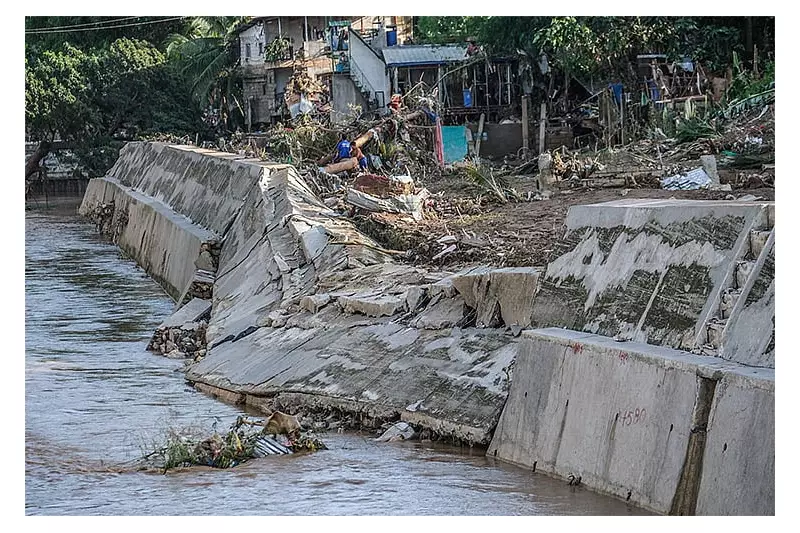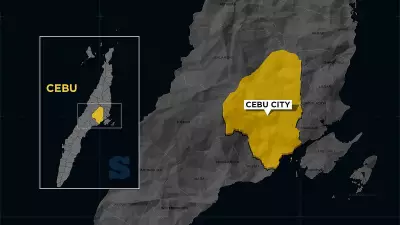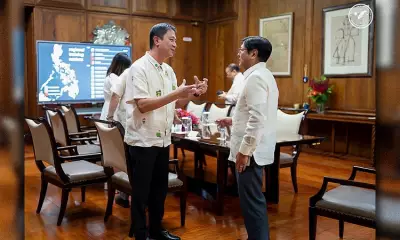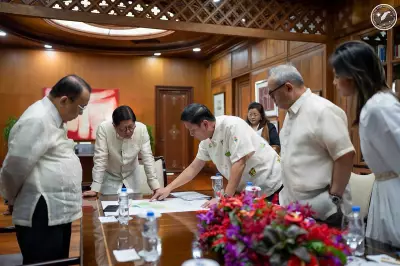
In the wake of devastating floods from Typhoon Tino, Cebu's leaders are intensifying their demands for the immediate implementation of a long-delayed, comprehensive flood control master plan, marking a critical turning point for the region's disaster resilience.
Renewed Urgency for a Science-Based Solution
Vice Governor Glenn Soco has forcefully renewed his advocacy for the Metro Cebu Integrated Flood and Drainage Master Plan, describing it as the vital, science-based answer to the province's chronic flooding issues. The urgency of his call was amplified during a high-level meeting with President Ferdinand "Bongbong" Marcos Jr. to address the aftermath of the recent calamity.
During the discussion, Department of Public Works and Highways (DPWH) Secretary Vince Dizon brought the proposed master plan to the President's attention. The ambitious plan encompasses the entire Metro Cebu area, stretching from Carcar City to Danao City. Its core strategy involves tackling flooding at its source in upstream areas, rather than focusing only on the visible damage downstream.
"The President expressed that he is open to pursuing the plan, a moment of hope for Cebu," Soco stated in a Facebook post on Saturday, November 8, 2025. This openness from the national leadership has ignited a fresh wave of optimism for a problem that has plagued communities for years.
A Plan Years in the Making, Yet Unimplemented
The fight for this master plan is not new. Soco first championed the proposal back in 2017 during his tenure as chairman of the Infrastructure Development Committee of the Regional Development Council (RDC). The plan itself is grounded in a robust 2013 study conducted by the Japan International Cooperation Agency.
Despite this strong foundation and subsequent endorsements through multiple RDC resolutions and a provincial ordinance, the plan has languished, remaining largely unimplemented for over a decade. Following the meeting with the President, Soco personally handed copies of the endorsing documents to Secretary Dizon, thanking him for his role in elevating the critical issue.
The meeting was also attended by key figures involved in the plan's creation, including Dr. Danny Jaque, a consultant who helped craft it, and Kenneth Cobonpue, the former RDC chairman during its initial advancement.
Accountability and the Human Cost of Inaction
The theoretical need for the plan was made tragically real by Typhoon Tino. "Every time I visit our communities after a storm and see families wading through floodwaters, I am reminded why we must act. Typhoon Tino is another painful wake-up call," Soco shared, highlighting the human suffering behind the bureaucratic delay.
He emphasized the frustration of having a ready-made solution that was disregarded. "This could have been a significant solution to our flooding problems. Cebu is our home. We need to take care of Cebu," he asserted. Soco also called for strict accountability, urging action against any anomalies in previous flood control projects that failed to deliver.
This demand for accountability was echoed by Governor Pamela Baricuatro, who earlier confronted the media on Thursday, November 6. She demanded justice from officials and contractors responsible for more than P26 billion worth of flood control projects that proved ineffective against Typhoon Tino, which she described as the province's "deadliest flooding in years."
The typhoon, which struck two days prior, submerged communities from Minglanilla to Danao City, resulting in over a hundred fatalities and causing billions of pesos in damage to property and infrastructure. Shockingly, data from the Sumbong sa Pangulo website reveals that at least 414 flood control projects worth P26.7 billion were implemented across Cebu between 2022 and 2025. Despite this massive investment, widespread flooding crippled southern, western, and northern parts of the province.
With both the Vice Governor and the Governor uniting in their push for tangible solutions and public accountability, the pressure is now squarely on national government agencies to ensure that Cebu's flood control initiatives are properly executed and maintained to avert future disasters.





